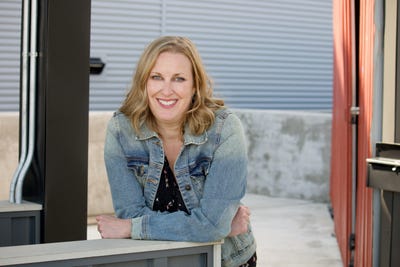
Gain inspiration from your colleagues by "stealing" their ideas.
Fresh from FSD's Menu Directions conference: Operational hacks too good not to stealFresh from FSD's Menu Directions conference: Operational hacks too good not to steal
From AI as a menu-planning tool to pickling vegetable scraps, these ideas are ready to put into action, courtesy of the Menu Directions conference.

FoodService Director’s Menu Directions conference, which ended Wednesday in Atlanta, featured everything from a five-week menu plan generated by AI to upcycling vegetable scraps into pickles, best practices for recruiting talent, incorporating “stealth health” into dishes, and tapping nostalgia to attract Gen Z diners.
Over three days, attendees from K-12, health care, college dining and B&I gathered and shared actionable ideas to take back to their operations. These are the takeaways that rose to the top—and are equally as relevant to restaurant operators.
AI can be a menu-planning tool—but it’s not perfect. Chef Ian Ramirez, founder of Mad Honey Culinary Studio, demonstrated how Chat GPT and Google’s Gemini platform can generate five-week menu plans in minutes—something that could take weeks the old-fashioned way. AI can also assist with recipe development and culinary innovation, as we witnessed as Ramirez created a Latin concept called Cayenne on the screen on stage. But—and this is a big but—always double-check AI with HI (Human Intelligence.) “AI lies,” he said, especially when it comes to nutritionals and allergen info in recipes. So as AI continues to learn, us humans will need to check everything it does diligently.
Don’t be afraid to fail when trying for a sustainable future. At the panel “The State of Sustainability in the Industry,” moderated by FSD Associate Editor Reyna Estrada, operators from five different foodservice segments talked about their ongoing journeys to sustainability. “We always try to at least do something; we know not all of it’s going to work,” said Damian Monticello, director, enterprise hospitality and event services for insurance company Guidewell.
Monticello described some of Guidewell’s recent sustainability initiatives. A food waste dehydrator now in use can convert 400 pounds of waste into 70 pounds, which is diverted from dumpsters and can then be used for composting. The B&I provider has also switched from batch cooking in hotel pans to mobile ordering of single meals, so the kitchen doesn’t prepare food until an order is received, eliminating unused trays of food at the end of the day. And in pilot test at the company’s Orlando location is an atmospheric water filter system that generates drinking water from humidity in the air. “We always tell our team—and I’ve told my kids this as they were growing up—'even if you fall on your face, at least you’re moving forward,’” he told the audience.
Reduce waste through portioning. Portioning (or the lack thereof) is emerging as a key tool in the noncommercial sector’s efforts to foster sustainability. In addition to Monticello’s elimination of batch cooking, two other operators on the same sustainability panel recounted how they significantly reduced trash output by discontinuing their use of single-serving milk containers. Instead, customers are invited to draw milk by the glass from a bulk package. Less milk is wasted because the patrons usually take only the amount of milk they actually drink. But the big payback is the reduction in packaging, a saving that extends all the way up the supply chain, to the milk processor.
Tech can give you a leg up in recruitment. AI has entered the human resources department as well as the kitchen. In a panel on “Labor Shifts” moderated by Restaurant Business Editor-at-Large Peter Romeo, LaTosha Marks, senior VP of human resources at Proof of the Pudding, uses Landed, a software program that integrates AI, to interview prospective candidates. “It gives each candidate qualifying questions and then sets up a more in-depth interview with the recruiter,” said Marks, explaining that she had to look for new ways to find and recruit talent in an increasingly competitive environment. “We’re not only competing for talent against companies in the same [hospitality] industry, but those in other industries,” she said. “And new hires interview me as much as or more than I interview them!”
Nostalgia is a lure for Gen Z. Operators wishing to attract Gen Z diners may want to look to the past for menu inspiration, according to Technomic Editor Katie Bellflower. During her general session on “Consumer & Menu Trends to Watch,” she pointed out that dishes with a good dose of nostalgia scored high with younger diners. “This generation in particular, even though they still are on the younger side, are wanting to look to the past, maybe feel a little bit like kids again,” Bellflower told attendees. “So, they're all looking for new takes on some more familiar favorites.”

Pop Tarts evoke nostalgia for Gen Zers. | Photo by W. Scott Mitchell Photography
The trend was also present at the vendor fair, where Little Brown Bird Bakery menued a gluten-free version of Pop Tarts and a savory-and-sweet funnel cake.
Turn trash into culinary treasure. Chef Jonathan Pye, VP of culinary for American Dining Creations, took the stage for a crash course in profiting from zero-waste cooking. While many operators are familiar with turning carrot tops and other leafy ingredients into pesto, Chef Pye works other magic with vegetables. He turns asparagus trimmings into an aioli enhanced with miso and pickles any and all vegetable scraps to use as a garnish or side on a plate. Potato peelings are washed, dried, fried and seasoned to turn into chips. At one of his operations, he sells these chips for 99 cents a portion at the deli counter, with a card that relates the zero-waste story.
Two standout ideas focused on used coffee grounds and leftover cake. Pye dries coffee grounds, pulverizes them slightly and combines with seasonings to turn them into a rub for roasting beets or meats. And he scoops leftover cake into small balls, coats them with icing, candy sprinkles, chopped nuts, etc. and sells them in boxes as “cake truffles” at his cafes.
Inspire healthy eating with deliciousness. To change the perception of hospital food, create meals that inspire, said Jeffrey Quasha, senior director of culinary innovation at Morrison Healthcare, during a panel on “The Food-as-Medicine Movement,” moderated by FSD Senior Editor Benita Gingerella. Deliciousness is his first priority, so he eliminated what he calls the “dirty dozen;” ingredients like precooked proteins. He boosts umami in dishes with spices and citrus, uses elevated china on room-service trays, and incorporates colorful ingredients to create beautiful food that fits a patient’s prescribed diet.
The trick is not to call out “low sodium,” “low fat” and other descriptives that turn people off to health. Panelist Carolyn O’Neil, a registered dietitian who consults with Delta Airlines, was asked to create an entrée that is sodium-controlled and absent of all nine allergens. She came up with a “Wellness Bowl” that combines lean protein, vegetables and quinoa salad to meet those criteria, making it beautiful, delicious and healthy without any negative-sounding labels.
Diners are looking for more than just food from their foodservice provider. “What everyone’s looking for is agency, to feel like they’re cared about,” said Alexandra Ceribelli, chef-manager of Harvest at Rutgers University. During a panel on “The Dish on Menu Planning,” moderated by RB Senior Editor Pat Cobe, she emphasized that her customers want an array of food options along with the resources necessary to make informed decisions about their choices. But they want to make those decisions themselves, not be directed to the “healthy” items.
In addition, customer service and hospitality are more important than ever, said Ceribelli. She interacts with students onsite as well as in a Reddit group, where she gets ideas for recipes based on students’ family favorites or country of origin. “Many students are far away from home and they're in a place that they're unfamiliar with,” she said, “so making people feel as if they are cared for really goes a long way.”
Menu Directions is presented by Informa, the parent company of Restaurant Business.
About the Authors
You May Also Like









.jpg?width=300&auto=webp&quality=80&disable=upscale)
